Last Updated on August 5, 2021 by Jeremy
Disclaimers: Our site uses demographic data, email opt-ins, display advertising, and affiliate links. Please check out our Terms and Conditions for more information. Listed prices and attraction details may have changed since our visit and initial publication.
If you paid even the slightest attention during your American history classes in school, odds are good you know a bit about Boston's impact on the Revolutionary War and the subsequent founding of our country.
If you forgot your history, well, the Freedom Trail in Boston has you covered with a self-guided walking tour (aptly named the Freedom Trail) through many of the historical sights, landmarks, and buildings.
In this one, we thought we'd take you on a fun little virtual tour of some of our favorite sights from the Boston Freedom Trail!
Start the Boston Freedom Trail in the Common
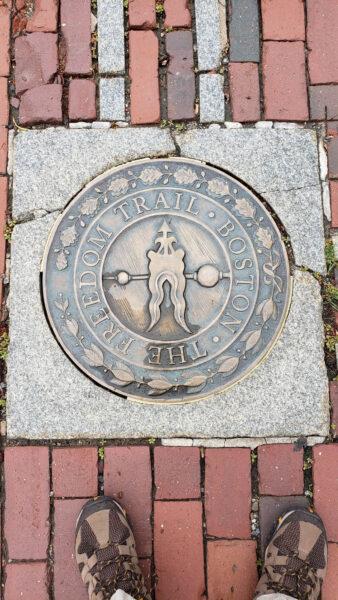
The Boston Freedom Trail starts in Boston Common in front of the Visitor Center on Tremont Street (we highly recommend taking some time to explore the park and the Public Garden next door before starting your walking tour). From there, you follow a trail of custom-laid bricks to help direct you from sight to sight. An inventive way to help people get around!
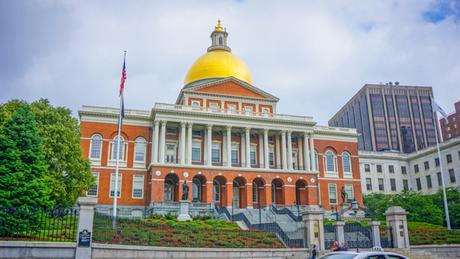
The Massachusetts State House is centrally located in downtown Boston and can be seen on the north end of Boston Common at the start of the Freedom Trail.

After visiting the State House, you'll circle back a bit and make your way toward the Granary Burial Ground- one of the most historic cemeteries not only in Boston but the country. Resting here are three signers of the Declaration of Independence (Samuel Adams, John Hancock, and Robert Paine), well-known Patriots during the Revolutionary War (such as Paul Revere), victims of the Boston Massacre, and even Benjamin Franklin's parents to name a few.
The Boston Freedom Trail has two more cemeteries found along the route (King's Chapel and Copp's Hill) that are also worth stopping at; however, Granary Burial Ground often has the most profound impact on visitors.
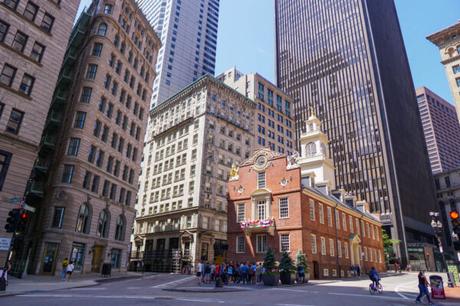
The Old State House is a few stops away from Granary Burial Ground and is the former seat of the Massachusetts General Court. The Boston Massacre occurred in the square here in 1768 and the Declaration of Independence was read for the first time from the balcony here as well (a tradition that continues every 4th of July).
Visitors can enter this one for a nominal fee which is also good for entry at Old South Meeting House along the route as well.
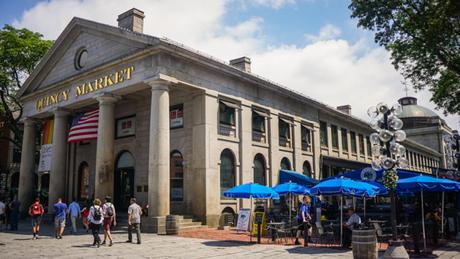
Quincy Market is one of the newer buildings you'll find along the Freedom Trail, and by new, I mean 1826. The multi-story building takes plays off Greek Revival architecture and is home to a public market that continues to operate to this day.

After leaving the Market, it is time to continue on the Freedom Trail into the Old Town of Boston where we head to The Paul Revere House. This house was built in 1680 and is considered to be the oldest house in old Boston and one of the oldest colonial buildings remaining in the United States (to think, when Paul Revere went on his famous ride the house was almost 100 years old!). While open for tours, expect long lines here which is why we opted to enjoy this one from the outside.
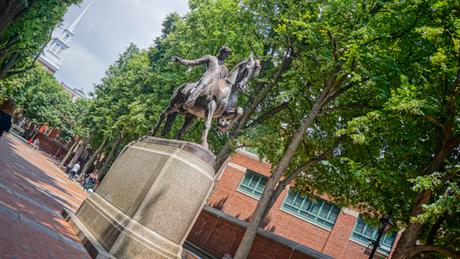
Naturally, the Boston Freedom Trail also has many gorgeous statues along the route, including this one memorializing Revere's famous ride.
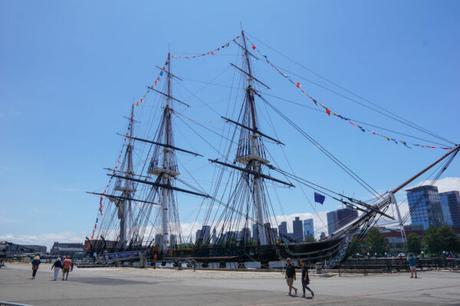
While many visitors may end their time on the Freedom Trail in Old Town Boston (as I did on my first visit), you'll do well to continue walking across the Charles River north of the city. Here you'll quickly reach the USS Constitution (and corresponding museum), a gorgeous three-mast ship that first sailed in 1797 and is generally considered to be the world's oldest ship still afloat (be sure to check out the lower decks too).
Although the USS Constitution is free to visit, note that the grounds and museum are part of a National Historic Park and you have to pass through airport-style security screening for entry.
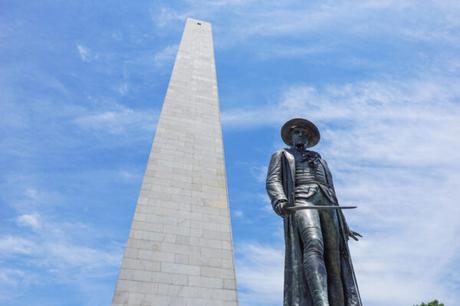
The Freedom Trail ends at Bunker Hill, where a modest memorial and obelisk were erected to commemorate the bloody Revolutionary War battle that occurred here in 1775. Although the British ultimately won this battle, it came with heavy losses and proved that militia soldiers could stand up to a well-trained army. The rest, as they say, is history.
Overall, the Boston Freedom Trail is incredible for a number of reasons. First, there is so much history to see in such a small walking area that even this guide only shares about half of the stops. Second, the paved walking tour is an intuitive approach to packing it all in. Just follow the stone path in the ground and you'll get to see so many incredible sights during your half-day or full-day outing (pending how many museums you visit, of course).
Don't miss this if you ever make it to Boston!
Do you have a favorite spot on the Boston Freedom Trail? Comment below to share!
Looking to book your next trip? Check out the following services we use!
